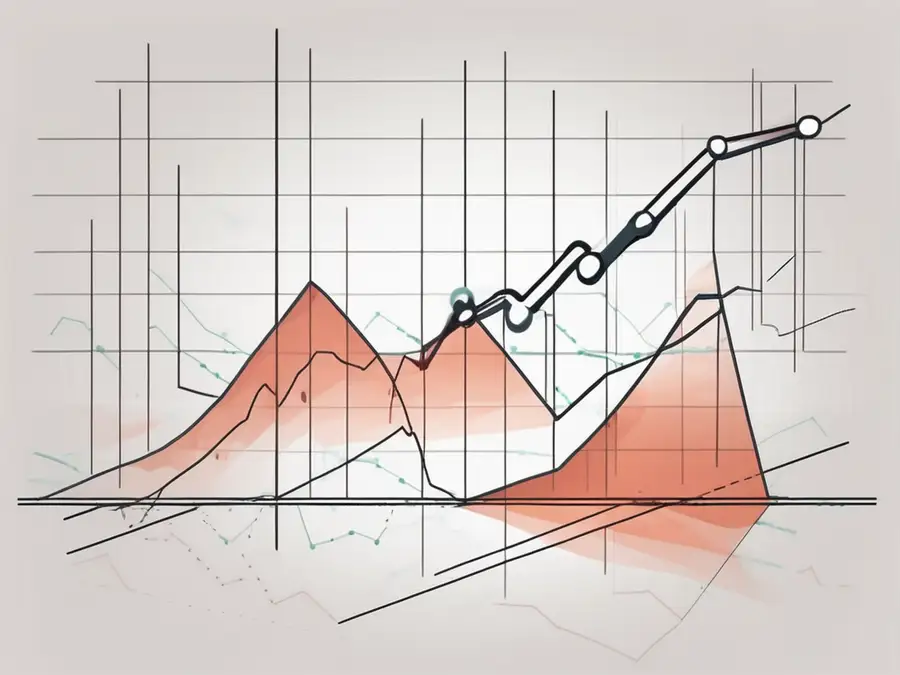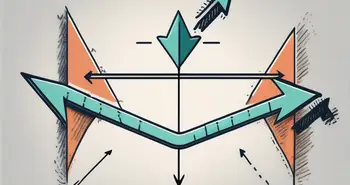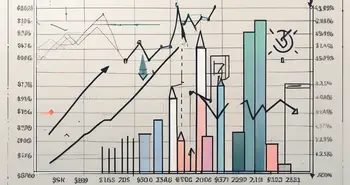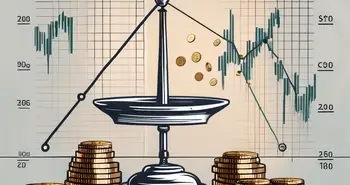Understanding the Ulcer Index: A Comprehensive Guide

As an expert in investment analysis, I am pleased to present to you a comprehensive guide on understanding the Ulcer Index. In this article, we will explore the origin, purpose, calculation, and practical application of the Ulcer Index, as well as its importance in investment analysis and its future prospects in the context of modern finance. So, let's get started!
What is the Ulcer Index?
The Ulcer Index is a widely used risk metric that measures the downside risk in an investment or portfolio. Developed by Peter G. Martin, it is named after its ability to “unmask” the underlying volatility of an investment by focusing on the depth and duration of drawdowns. This makes it a valuable tool for investors looking to assess the risk associated with their investments.
Origin and Purpose of the Ulcer Index
The Ulcer Index was first introduced in the late 1980s as an improvement over other risk metrics that primarily focused on standard deviation. Martin recognized that standard deviation alone fails to capture the emotional impact of investment losses and developed the Ulcer Index to address this limitation. Its purpose is to provide a more comprehensive and nuanced measure of risk.
Investing in financial markets can be a rollercoaster ride, with prices fluctuating up and down. These fluctuations can cause investors to experience emotional stress and anxiety, especially when their investments suffer significant losses. The Ulcer Index aims to quantify this emotional impact by taking into account not only the magnitude of drawdowns but also the time it takes for the investment to recover.
By focusing on the depth and duration of drawdowns, the Ulcer Index provides a more accurate representation of the risk associated with an investment. It helps investors understand the potential downside they may face and make informed decisions about their portfolios.
Basic Concept and Calculation of the Ulcer Index
The Ulcer Index is calculated by measuring the percentage drawdowns and the time it takes to recover from those drawdowns. It focuses on the downside volatility of an investment, providing investors with a clearer understanding of the risk they are taking on. The formula for calculating the Ulcer Index involves determining the square root of the mean of the squared percentage drawdowns over a specific period, usually 14 days.
Let's delve deeper into the calculation process. To calculate the Ulcer Index, you first need to identify the percentage drawdowns. A drawdown is defined as the percentage decline from a previous peak. For example, if an investment's value drops from $1,000 to $800, the drawdown would be 20%.
Once you have identified the drawdowns over the specified period, you square each drawdown percentage and calculate the mean of these squared values. Taking the square root of this mean provides the Ulcer Index value.
For instance, if you have a series of drawdowns over a 14-day period, you would calculate the square of each drawdown percentage, sum them up, divide by the number of drawdowns, and then take the square root of the result. The resulting value represents the Ulcer Index for that specific period.
By calculating the Ulcer Index over different timeframes, investors can gain insights into the risk profile of their investments. A higher Ulcer Index indicates a higher level of risk, while a lower Ulcer Index suggests a more stable investment with less downside volatility.
It is important to note that the Ulcer Index is just one of many risk metrics available to investors. It should be used in conjunction with other tools and analysis to form a comprehensive view of investment risk.
Importance of the Ulcer Index in Investment Analysis
Understanding risk is essential for effective investment analysis, and the Ulcer Index plays a vital role in this regard. Let's explore why.
Risk Measurement and the Ulcer Index
The Ulcer Index offers a more accurate measure of risk compared to standard deviation. By focusing on drawdowns, it captures the emotional impact of losses and provides investors with a clearer understanding of the risk associated with their investments. This enables investors to make more informed decisions and manage their portfolios more effectively.
When it comes to investment analysis, risk is a critical factor that needs to be carefully evaluated. Traditional risk metrics, such as standard deviation, provide valuable insights into the volatility of an investment. However, they fail to capture the full picture of risk, as they do not consider the emotional toll that losses can have on investors.
This is where the Ulcer Index comes into play. Unlike standard deviation, which focuses solely on the dispersion of returns, the Ulcer Index takes into account drawdowns. A drawdown is a decline in the value of an investment from its peak to its subsequent trough. By considering drawdowns, the Ulcer Index provides a more comprehensive assessment of risk.
But why are drawdowns important? Drawdowns represent not only the financial losses investors may experience but also the emotional impact of those losses. Investors often react differently to losses compared to gains, and the Ulcer Index acknowledges this psychological aspect of investing.
By quantifying the depth and duration of drawdowns, the Ulcer Index offers a more accurate measure of risk. It provides investors with a clearer understanding of the potential downside they may face when investing in a particular asset or portfolio. This knowledge empowers investors to make more informed decisions and adjust their investment strategies accordingly.
Comparing the Ulcer Index with Other Risk Metrics
While there are several risk metrics available to investors, the Ulcer Index offers unique advantages. Unlike other metrics, such as standard deviation or beta, the Ulcer Index explicitly focuses on downside risk and allows investors to gauge the pain potential in their investments. By considering both the depth and duration of drawdowns, it provides a more comprehensive assessment of risk.
Standard deviation, a commonly used risk metric, measures the dispersion of returns around the mean. It provides insights into the volatility of an investment but fails to capture the emotional impact of losses. Beta, on the other hand, measures an investment's sensitivity to market movements but does not explicitly focus on downside risk.
The Ulcer Index, however, takes into account the emotional aspect of investing by quantifying drawdowns. It provides investors with a more realistic view of the potential losses they may experience and allows them to assess the pain potential in their investments. This information is invaluable for investors who want to manage their portfolios effectively and make informed decisions.
Furthermore, the Ulcer Index offers a more comprehensive assessment of risk by considering both the depth and duration of drawdowns. It recognizes that not all drawdowns are created equal and that a prolonged drawdown may have a more significant impact on investors compared to a shorter one.
In conclusion, the Ulcer Index is a powerful tool for investment analysis. By focusing on drawdowns and capturing the emotional impact of losses, it provides investors with a more accurate measure of risk. This knowledge empowers investors to make informed decisions, manage their portfolios effectively, and navigate the complex world of investing with confidence.
Interpreting the Ulcer Index
Now that we understand the basics, let's discuss how to interpret the Ulcer Index.
Understanding High and Low Ulcer Index Values
A high Ulcer Index value indicates that an investment experiences significant and prolonged drawdowns, indicating higher risk. Conversely, a low Ulcer Index value suggests that an investment has experienced relatively minor and shorter drawdowns, indicating lower risk. By comparing Ulcer Index values across different investments or time periods, investors can make informed decisions based on their risk tolerance and investment objectives.
The Role of Market Volatility in the Ulcer Index
Market volatility plays a significant role in determining Ulcer Index values. During periods of high volatility, investments are more likely to experience deeper and more extended drawdowns, resulting in higher Ulcer Index values. Conversely, during periods of low volatility, investments tend to exhibit shallower and shorter drawdowns, leading to lower Ulcer Index values.
Practical Application of the Ulcer Index
Now, let's explore the practical applications of the Ulcer Index.
Using the Ulcer Index for Portfolio Optimization
The Ulcer Index is a valuable tool for portfolio managers and individual investors alike. By assessing the downside risk of individual investments and the portfolio as a whole, it allows for effective portfolio optimization. Investors can adjust their asset allocation, diversify their investments, or select investments with lower Ulcer Index values to minimize risk and maximize returns.
Limitations and Criticisms of the Ulcer Index
While the Ulcer Index is a powerful risk metric, it is important to be aware of its limitations. One criticism is that it focuses solely on downside risk, potentially overlooking the upside potential of an investment. Additionally, the Ulcer Index does not take into account factors such as market conditions, sector-specific risks, or external events, which can influence investment performance. Therefore, it should be used in conjunction with other tools and analysis to make well-informed investment decisions.
Future of the Ulcer Index
As we venture into the future, let's consider the outlook for the Ulcer Index and its relevance in modern finance.
Technological Advances and the Ulcer Index
With the advancements in financial technology and the availability of vast amounts of data, the Ulcer Index can be more easily calculated and applied than ever before. Modern portfolio management platforms and software enable investors to incorporate the Ulcer Index into their investment decision-making process seamlessly, empowering them to make more informed choices and effectively manage risk.
The Ulcer Index in the Context of Modern Finance
In the rapidly evolving field of finance, the Ulcer Index remains a valuable tool. As investors become more risk-conscious and seek methods to better understand and manage their portfolios, the Ulcer Index's traditional principles continue to hold relevance. Its ability to assess downside risk and quantify the emotional toll on investors makes it an indispensable metric in the realm of modern finance.
Now that we have explored the comprehensive guide to understanding the Ulcer Index, you are equipped with the knowledge to make more informed investment decisions. Remember, risk is an inherent part of investing, and utilizing effective risk management tools like the Ulcer Index can significantly enhance your investing experience.
Feel free to explore our website for more insightful articles and resources to help you on your investment journey.
—
FAQ
What is the Ulcer Index?
The Ulcer Index is a risk metric developed to measure the downside risk in an investment or portfolio. It focuses on the depth and duration of drawdowns to provide investors with a comprehensive understanding of risk.
How is the Ulcer Index calculated?
The Ulcer Index is calculated by measuring the percentage drawdowns and the time it takes to recover from those drawdowns. The formula involves determining the square root of the mean of the squared percentage drawdowns over a specific period, usually 14 days.
Why is the Ulcer Index important in investment analysis?
The Ulcer Index is important in investment analysis because it provides a more accurate measure of risk compared to traditional metrics like standard deviation. It focuses on capturing the emotional impact of losses and allows investors to make more informed decisions.
How can the Ulcer Index be used for portfolio optimization?
The Ulcer Index can be used for portfolio optimization by assessing the downside risk of individual investments and the portfolio as a whole. Investors can adjust their asset allocation, diversify their investments, or select investments with lower Ulcer Index values to minimize risk and maximize returns.
What are the limitations of the Ulcer Index?
While the Ulcer Index is a powerful risk metric, it has some limitations. It focuses solely on downside risk, potentially overlooking the upside potential of an investment. Additionally, it does not consider external factors that may impact investment performance, such as market conditions or sector-specific risks.
Ready to take control of your investment journey with a platform that understands the importance of risk management tools like the Ulcer Index? Look no further than Morpher, the revolutionary trading platform that offers zero fees, infinite liquidity, and the flexibility of fractional investing. With Morpher, you can trade across a multitude of asset classes, including stocks, cryptocurrencies, and more, all while maintaining safety and control over your funds. Amplify your trades with up to 10x leverage and experience the future of investing on the Ethereum Blockchain. Sign Up and Get Your Free Sign Up Bonus today, and transform the way you trade with Morpher.

Disclaimer: All investments involve risk, and the past performance of a security, industry, sector, market, financial product, trading strategy, or individual’s trading does not guarantee future results or returns. Investors are fully responsible for any investment decisions they make. Such decisions should be based solely on an evaluation of their financial circumstances, investment objectives, risk tolerance, and liquidity needs. This post does not constitute investment advice.

Painless trading for everyone
Hundreds of markets all in one place - Apple, Bitcoin, Gold, Watches, NFTs, Sneakers and so much more.

Painless trading for everyone
Hundreds of markets all in one place - Apple, Bitcoin, Gold, Watches, NFTs, Sneakers and so much more.









